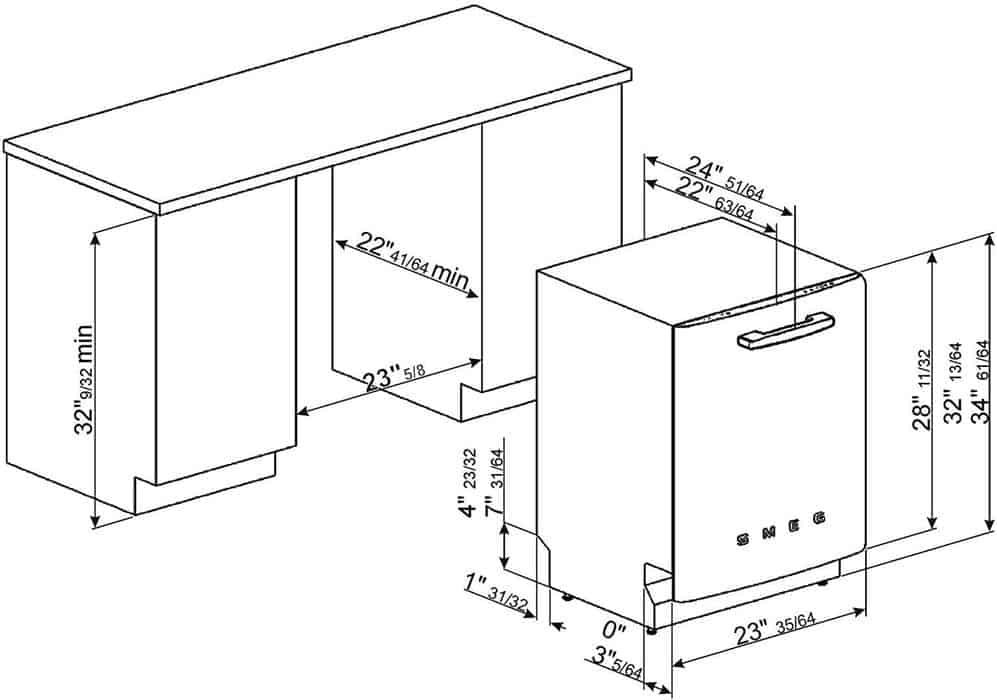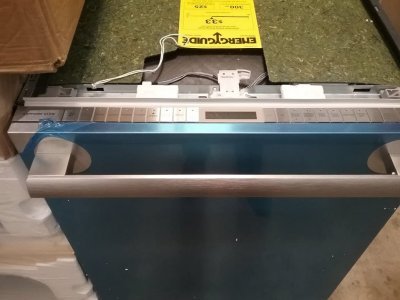Are you considering purchasing a new dishwasher for your kitchen? Before you make a decision, it’s important to ensure that you have the right measurements to fit the dishwasher properly in your space. In this article, we will provide you with a step-by-step guide on how to measure for a dishwasher. By following these instructions, you can avoid any potential installation issues and make the process smoother.
When it comes to buying a new dishwasher, proper measurement is crucial to ensure a seamless installation. Taking accurate measurements will help you determine the right size and style of dishwasher that will fit perfectly into your kitchen space.
Table of Contents
Measuring the Height
Start by measuring the height of the space where you plan to install the dishwasher. Use a tape measure and measure from the floor to the underside of your countertop. Make sure to measure at the tallest point to allow for any protrusions, such as decorative trim or backsplashes.
Measuring the Width
Next, measure the width of the space where the dishwasher will go. Measure the distance between the cabinets or walls on either side of the opening. It’s important to ensure that there is enough space for the dishwasher to fit without any obstructions.
Measuring the Depth
Measure the depth of the space where the dishwasher will be installed. Measure from the back wall to the front edge of the countertop or the front edge of the cabinets. This measurement will help you determine the depth capacity of the dishwasher you can choose.

Measuring the Space
To ensure a proper fit, measure the space available for the dishwasher. Measure the height, width, and depth of the available space. Take note of these measurements to compare them with the dimensions of the dishwasher you are interested in.
Considering Additional Clearance
While measuring the space, it’s important to consider additional clearance requirements. Dishwashers typically require some clearance at the sides, top, and back to allow for proper ventilation and ease of installation. Check the manufacturer’s specifications for the specific clearance requirements of the dishwasher model you are considering.
Checking for Door Swing Clearance
Take into account the door swing clearance to ensure that the dishwasher door can fully open without any obstructions. Measure the space in front of the dishwasher to ensure that there is enough room for the door to open and for you to comfortably load and unload dishes.
Measuring for Built-In Dishwashers
If you are installing a built-in dishwasher, measure the space beneath the countertop where the dishwasher will be placed. This will help you determine the proper height of the dishwasher you should look for.

Measuring for Portable Dishwashers
For portable dishwashers, measure the space where you plan to store the dishwasher when it’s not in use. Portable dishwashers typically have wheels and require a space with sufficient height, width, and depth.
Measuring for Countertop Dishwashers
Countertop dishwashers are designed to sit on top of the counter. Measure the available counter space to ensure that the dishwasher will fit properly and have enough room for its connections.
Determining the Plumbing Requirements
Before purchasing a dishwasher, consider the plumbing requirements. Measure the distance from the sink to the dishwasher location to ensure that the dishwasher’s water supply and drain lines can reach without any issues. Consult a plumber if you need assistance with any plumbing modifications.
Finding the Right Dishwasher Size
Based on your measurements, compare them with the dimensions of different dishwasher models available in the market. Look for dishwashers that match your requirements and have a size that fits perfectly into the space you have measured.
How to measure for a new Dishwasher?
Measuring for a new dishwasher is a fairly simple process that involves taking accurate measurements of the space where the dishwasher will be installed. Here are a few steps to help you get started:
- Measure the height: Start by measuring the height of the space where the dishwasher will go. This can typically be done by measuring from the floor to the bottom of your countertop. Make sure to account for any adjustments that may need to be made, such as removing or adding flooring.
- Measure the width: Next, measure the width of the space where the dishwasher will fit. This can usually be done by measuring from one side of the cabinet opening to the other. Be sure to take into consideration any obstructions, such as pipes or electrical outlets, that may affect the width available.
- Measure the depth: Lastly, measure the depth of your cabinet opening. This can usually be done by measuring from the back wall to the front edge of your countertop or cabinets. It’s important to leave some extra room for proper installation and ventilation.
By following these steps and ensuring accurate measurements, you’ll be able to find a new dishwasher that fits perfectly into your kitchen space without any issues.
Can I install a dishwasher myself?
Yes, installing a dishwasher can be a DIY project if you have the necessary skills and tools. However, if you are unsure or uncomfortable with the process, it’s always recommended to hire a professional to ensure proper installation.
What are the standard dimensions for a dishwasher?
Standard dishwashers typically have a height of around 34 to 36 inches, a width of 24 inches, and a depth of 24 inches. However, there are variations in sizes, so it’s important to measure your space accurately.
Can I install a built-in dishwasher as a portable one?
No, built-in dishwashers are specifically designed for permanent installation, while portable dishwashers are freestanding and have different connections and dimensions. It’s important to choose the right type of dishwasher for your needs.
How much clearance does a dishwasher need?
The clearance requirements can vary depending on the dishwasher model. Generally, dishwashers require a few inches of clearance at the sides, top, and back for proper ventilation and installation.
Can I use an existing water line for a new dishwasher?
Yes, if you have an existing water line near the dishwasher location, it can typically be used for the new dishwasher. However, it’s important to ensure that the water line is in good condition and meets the specifications of the dishwasher you are installing.
How to measure a dishwasher?

Measuring a dishwasher is a relatively simple task that requires just a few measurements. Start by measuring the width of the space where you plan to install the dishwasher. This will typically be between two cabinets or other fixed structures. Measure from one side to the other, ensuring you account for any trim or molding that may be present.
Next, measure the depth of the space. This measurement should be taken from the back wall to the front edge of your countertop or cabinet, whichever protrudes further. Be sure to include any additional space needed for electrical outlets or water connections.
Lastly, measure the height of the space. This measurement should be taken from the floor to the bottom edge of your countertop or cabinet. Remember to account for any adjustments that may need to be made during installation, such as leveling feet or adjustable legs.
By taking accurate measurements of your space, you can ensure that you choose a dishwasher that fits perfectly and avoids any installation issues.
Conclusion
Measuring for a dishwasher is an essential step in the buying process to ensure a successful installation. By following the step-by-step guide outlined in this article, you can accurately measure your kitchen space and choose the right dishwasher that fits perfectly. Taking the time to measure beforehand can save you from unnecessary hassles and ensure a seamless integration of the dishwasher into your kitchen.
In conclusion, measuring for a dishwasher is a critical step to ensure a successful installation. By following the steps outlined in this article, you can accurately measure your space and find the perfect dishwasher that fits seamlessly into your kitchen. Remember to consider all the necessary clearances and plumbing requirements to avoid any issues. With the right measurements in hand, you’ll be on your way to enjoying the convenience and efficiency of a new dishwasher in no time.

